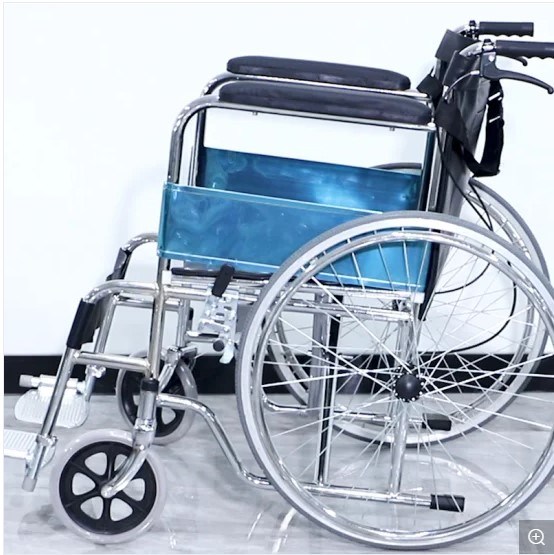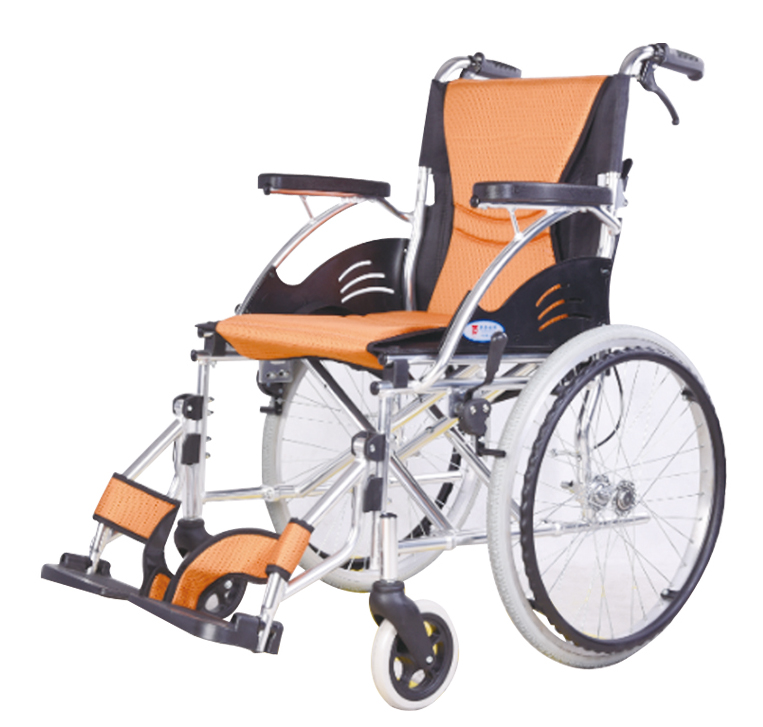Wheelchairs can be divided into four categories in terms of structure and function: first, soft seat cushions; second, hard seat cushions; third, high-back wheelchairs; fourth, wheelchairs with some special functions, such as: toilet, can be used as a cot and so on. There are many functions in the design of wheelchairs, but these functions cannot be reflected in the same wheelchair at the same time, and users should choose and buy according to their own needs.
Generally only as a means of transportation, a foldable and lightweight wheelchair should be selected. It can be put into the trunk of the car, can be easily carried upstairs, and takes up less space when not in use.
For special users who only have one hand or can only drive the wheelchair with one hand, choose a wheelchair that can drive two wheels simultaneously with only one hand. Otherwise, if you buy an ordinary wheelchair without a nursing staff, you can only spin around in place.
Wheelchair is an important tool for patient rehabilitation, a means of transportation for people with lower extremity disabilities, and a lifelong means of transportation for patients with spinal cord injury. More importantly, it enables them to exercise and participate in social activities with the help of wheelchairs. Wheelchairs are divided into ordinary wheelchairs, electric wheelchairs and special-shaped wheelchairs. The commonly used special-shaped wheelchairs are standing wheelchairs, lying wheelchairs, unilateral drive wheelchairs, and competitive wheelchairs.
As a person or family member who uses a wheelchair for the first time, how should they choose?
1. Wheel landing. When the user drives to walk autonomously, whether it is pressing a small stone or passing a small ridge, other wheels will not be suspended in the air, resulting in loss of direction control or sudden turning.
2. Stability of expression. When the user drives autonomously to climb up the ramp or drive laterally across the ramp, they cannot tip over on their backs, buckle their heads, or tip over laterally.
3. Standing wave performance. When the paramedic pushes the patient to the ramp, brakes the brakes, and leaves, the wheelchair cannot roll off the ramp or roll over.
4. Glide offset. The deviation means the configuration is unbalanced, and the deviation value from the zero line in the 2.5 degree test track should be less than 35 cm.
5. Minimum radius of gyration. Make a 360-degree two-way rotation on the horizontal test surface, not more than 0.85 meters.
6. Minimum commutation width. The minimum aisle width that can turn the wheelchair 180 degrees in one reverse movement shall not be greater than 1.5 meters.
7. The width, length, height of the seat, the height of the backrest, and the height of the armrest should be selected for their own products.
8. Other auxiliary parts, such as anti-vibration devices, installing armrests and wheelchair tables, etc.
Post time: Mar-11-2022



